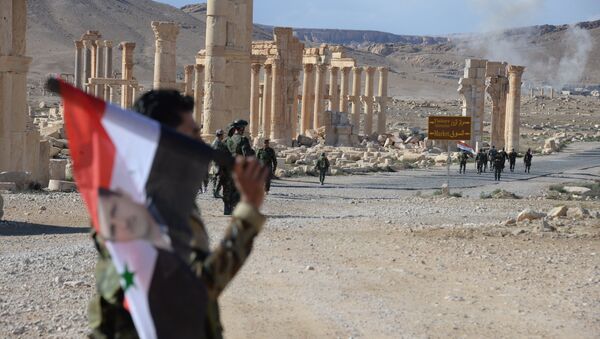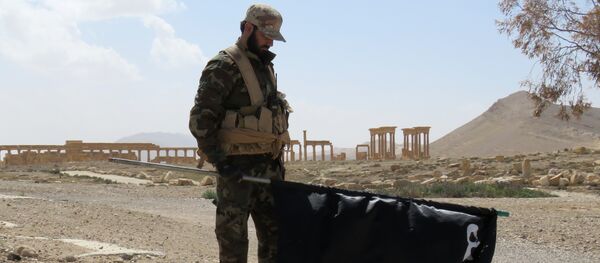Phelan visited Palmyra just days after the Syrian Army recaptured the ancient archeological treasure from the Daesh terrorists.
"It's quite incredible to be standing here in the pearl of the desert — the ancient city of Palmyra that for months people around the world feared would be reduced to dust by Daesh,"she said.
She also confirmed the destruction of several centuries-old artifacts, including the Temple of Bel, the Arch of Triumph and the Temple of Baalshamin. However, she said, some of the historic relics remain standing.
As far as the 2,000-year-old Temple of Bel is concerned, experts have yet to define whether it will be possible to reconstruct the historic site with the help of large stones that remained intact, according to Phelan.
She said that with the demining operation in full swing, Palmyra is still unsafe and much of the huge historic complex remains off limits to visitors.
Speaking to RT, Captain Ali Ali of the Desert Hawks Brigade said that the "souls of all those people who sacrificed their lives to save Palmyra will hopefully rest in peace" and that "we will further continue freeing all of Syria."
On March 27, the Syrian Army, supported by pro-government militia and the Russian Aerospace Forces, recaptured the historic city, which had been under Daesh control for about a year.
The city of Palmyra and its historic ruins had been controlled by Daesh since May 2015.
The jihadist group, which was condemned as a terrorist organization by Russia, the United States and other countries, shocked the world when it destroyed part of the ruins, which are a designated UNESCO World Heritage site.



